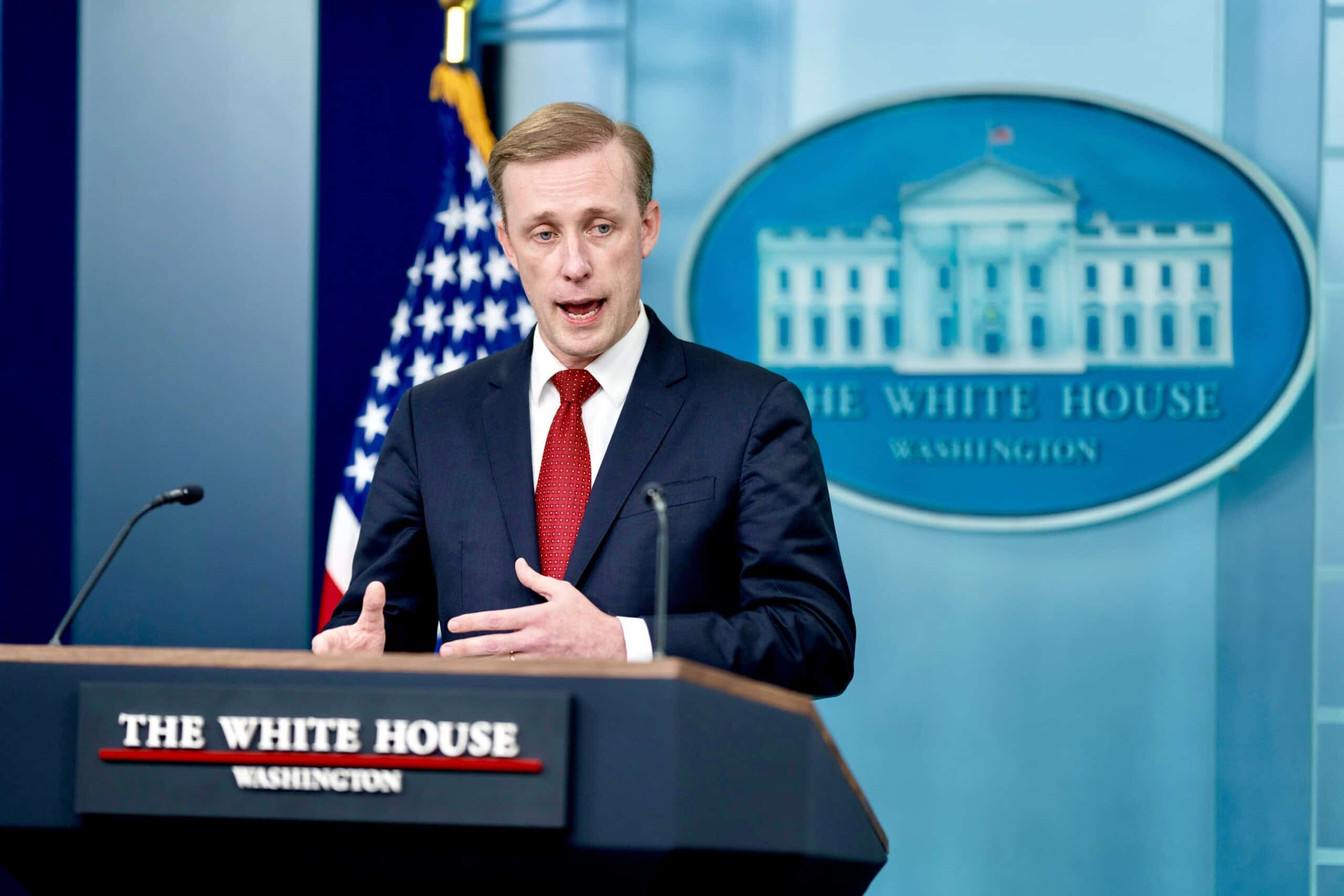
Over the past four years, the Biden administration has unlocked a formidable set of tools in the name of competing with China. These include extraterritorial export controls on cutting-edge technologies, financial sanctions against Chinese firms, and industrial policies designed to upgrade key industries. If these instruments had been used with strategic patience and in close coordination with allies, they might have achieved their aims. The problem is that, in January, they will be put in the hands of an unrestrained government with a preference for quick, tactical wins and unilateral action.
The Biden administration’s impulse to address economic risks from China is understandable. However, it made a critical mistake by not setting clear boundaries to its economic de-risking initiative and failing to build a stable coalition to support it. Without such guardrails, America’s economic security strategy remains open-ended, setting the stage for the Trump administration to enact sweeping measures from day one — including against allies.
Treasury Secretary Janet Yellen on national security at a press briefing during her visit to China, April 8, 2024. Credit: U.S. Department of the Treasury via YouTube
NO BOUNDARIES
When Treasury Secretary Janet Yellen visited Beijing in July 2023, she sought to reassure Chinese officials and international businesses that any coming U.S. trade restrictions would only touch “a few important sectors.” Echoing a well-established position, she explained that the Biden administration did not want to see a decoupling from the Chinese economy. Instead, the United States would pursue a de-risking approach based on “clearly articulated and narrowly targeted national security concerns.”
On the surface, National Security Advisor Jake Sullivan subscribed to this line of thinking. Last month, in his second speech on the topic at Brookings, Sullivan reiterated the importance of a “targeted” approach to de-risking. Behind the official stance, however, the National Security Council, as well as other branches of the U.S. government, has implemented a far more expansive policy. Contrary to Sullivan’s promises to maintain a “small yard and high fence” when it comes to technology restrictions, the government has continued to gradually expand the perimeter of its security-motivated trade and investment restrictions.

This mission creep has manifested across a variety of industries and policy domains. What started as targeted restrictions against Chinese companies Huawei and ZTE under the Trump administration has gradually expanded to a web of extraterritorial export controls on advanced chips, supercomputers, and related manufacturing equipment. Included in the expanding set of regulations are rules that prevent U.S. persons from supporting specific Chinese semiconductor manufacturing activities. To complement these controls, an outbound investment screening mechanism was recently finalized, limiting investments in AI, quantum computing, and semiconductor sectors.
Controls have gradually extended into areas not typically linked with national security. In May, the Biden administration introduced a set of so-called 301 tariffs, citing “key sectors that are vital for America’s economic future and national security.” These tariffs impose duties on goods such as steel, aluminum, solar cells, and medical equipment. In September, the Commerce Department proposed a regulation to restrict imports of certain connected vehicles and components from China and Russia, pointing to concerns over “computer systems that control vehicle movement and collect sensitive driver and passenger data.”

Even traditional manufacturing sectors have not been spared. Concerns have been mounting in Washington over China’s dominance in shipbuilding, for example. The proposed bipartisan “Ships for America Act,” expected for a Congressional vote this month, aims to revitalize U.S. shipbuilding through tax incentives and regulatory reforms. In July, Sullivan also voiced worries about the lack of U.S. icebreaker manufacturing capabilities, noting that “authoritarian nations” were trying to “corner the icebreaker market.” He emphasized the goal of having “democracies in the lead” and “building icebreakers here in the United States” to “develop an industrial base for a capability that has economic and strategic purposes.”
Despite claims to the contrary, Washington has shown little interest in clarifying the ultimate aims, and therefore limits, to its pursuit of economic security. The Commerce Department has even suggested that clearly delineating de-risking is unrealistic. In March, Commerce Secretary Gina Raimondo, referencing semiconductors, remarked that “technology is changing faster than ever, which means we have to wake up every day and ask ourselves, ‘Are we doing enough?’” Similarly, Sullivan noted that “meaningful shifts in policy require constant iteration and reflection.”
Ultimately, the absence of institutionalized cooperation sets the stage for friction with partners as the Trump administration seeks to expand restrictive policies toward China.
Four years into its tenure, the Biden administration has still been asking open questions about which technologies could potentially be harmful to U.S. national interests, hinting at new expansions.

Considering the immense complexity of managing economic interdependence with China, it would have been difficult for any administration to fully formulate and implement a new economic security strategy within just four years. However, the Biden team should have taken this into consideration from the beginning and outlined a more calibrated approach with clear boundaries. Having failed to do so, the Trump administration will take over an open-ended economic security policy framework that is primed for further, unrestrained expansion.
RELUCTANT ALLIES
Handing over this arsenal of economic security tools to the new administration would be less concerning if the United States had secured the backing of an international coalition. With a broad alliance, Trump’s advisors might recognize the value of unified, calibrated de-risking measures geared toward China, including a range of resilience-enhancing approaches by countries in Asia and Europe. Unfortunately, the Biden administration has not succeeded in building such a coalition.

Even two of America’s closest allies, Japan and the Netherlands, squirmed in 2022 when Washington imposed controls on semiconductor equipment exports. Ultimately, the Biden administration had to resort to the threat of secondary sanctions to bring them on board. There is little indication that the Trump administration would find it any easier to gain the support of allies.
Moreover, many countries in the Global South remain skeptical of what they view as provocative U.S. economic policies toward China. With a vested interest in multilateralism and in maintaining the free flow of goods and capital essential to their growth, most emerging markets are unlikely to find value in conforming to unilateral restrictions with protectionist undertones.

Ultimately, the absence of institutionalized cooperation sets the stage for friction with partners as the Trump administration seeks to expand restrictive policies toward China.
THE COMING UNILATERALISM
Under Trump, the likely scenario is an escalation of economic security measures against China. After all, it was the first Trump administration that set this trajectory in motion, beginning in 2018 with sanctions on Huawei and ZTE. The expected appointments of outspoken China hawks Mike Waltz as National Security Advisor and Marco Rubio as Secretary of State also speak in favor of this possibility.
Lacking international support, the U.S. government will have the choice of resorting to coercive measures to bring allies in line — an option the emboldened Trump is unlikely to shy away from. This would not only risk undermining the long-term effectiveness of the U.S.’s China policy but could also reignite a will among partners to reduce their reliance on parts of the U.S.-dominated financial system, including a move away from the U.S. dollar. It would mirror developments following Trump’s withdrawal from the Iran deal in 2018, when the reimposition of U.S. sanctions spurred European efforts to develop mechanisms to bypass American sanctions, only this time U.S. actions could provoke a more expansive and durable backlash.

Another possibility is that Trump aims for a grand bargain with China. Instead of ramping up strategic competition, his administration might focus on forcibly rebalancing the hefty trade deficit. With tariffs as leverage, Trump could push for concessions like currency appreciation or commitments to buy more U.S. goods. In this scenario, Biden’s export controls, sanctions, and industrial policy could be seen as bargaining chips rather than instruments of sustained competition. And if Trump senses a winning deal, he may well be willing to dial back these measures for concessions that could reshape the trade balance. He might even try to frame such an achievement as a historic reset, casting himself as a Nixon-like figure restoring America’s global advantage.
Given the broad support for a hawkish stance within America’s political establishment, a grand bargain with China remains unlikely. Still, a transactional realignment is far from impossible if business-oriented figures like Elon Musk manage to tap into Trump’s deal-making instincts.
Whether Trump launches an aggressive containment policy, negotiates directly with Xi Jinping, or tries a mix of both, he is unlikely to resist the temptation to use — and, most likely, to abuse — the shiny new economic security tools that he will inherit in January.

Viking Bohman is a Ph.D. Candidate at the Fletcher School of Tufts University and an associate analyst at the Swedish National China Centre at the Swedish Institute of International Affairs.

Matt Ferchen is a Senior Fellow with the Leiden Asia Centre and lecturer in Asian political economy at Leiden University.



